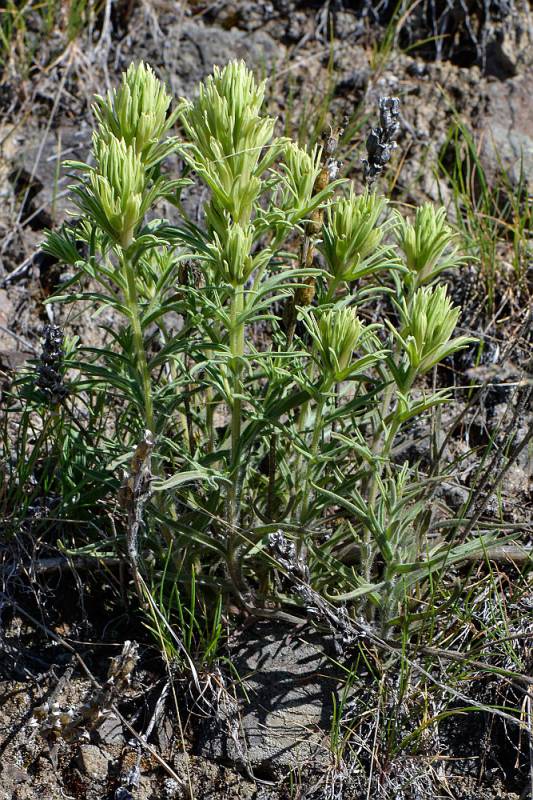Castilleja thompsonii
Orobanchaceae
Thompson's paintbrush
Lower leaves simple, linear; upper leaves narrow with 3-5 linear lobes; lightly hairy. Inflorescence leaves (bracts) yellowish-tinged.
Calyx 12-25 mm long, maroonish in color, with 4 acute lobes at tip, cleft more deeply above and below than on sides. Corolla incospicuous, greenish, hidden within the more showy calyx, the galea (upper beak) short, the lower lip greater than 1/2 length of galea, scarcely pouched. Ovary superior, 2-celled.
Many-seeded capsules.
Plants found at higher elevations tend to be smaller, less pubescent and more glandular.
Castilleja thompsonii
Orobanchaceae
East of the Cascade summits in Washington; British Columbia south to Oregon.
- Local floras:
CA,
OR
- Local Web sites:
CalFlora,
CalPhotos,
Flora NW,
PNW Herbaria
WildflowerSearch
iNaturalist (observations)
- LBJ Wildflower Center
- SEINet
- Plants of the World Online
- Encyclopedia of Life
- Wikipedia
- Google Image Search


